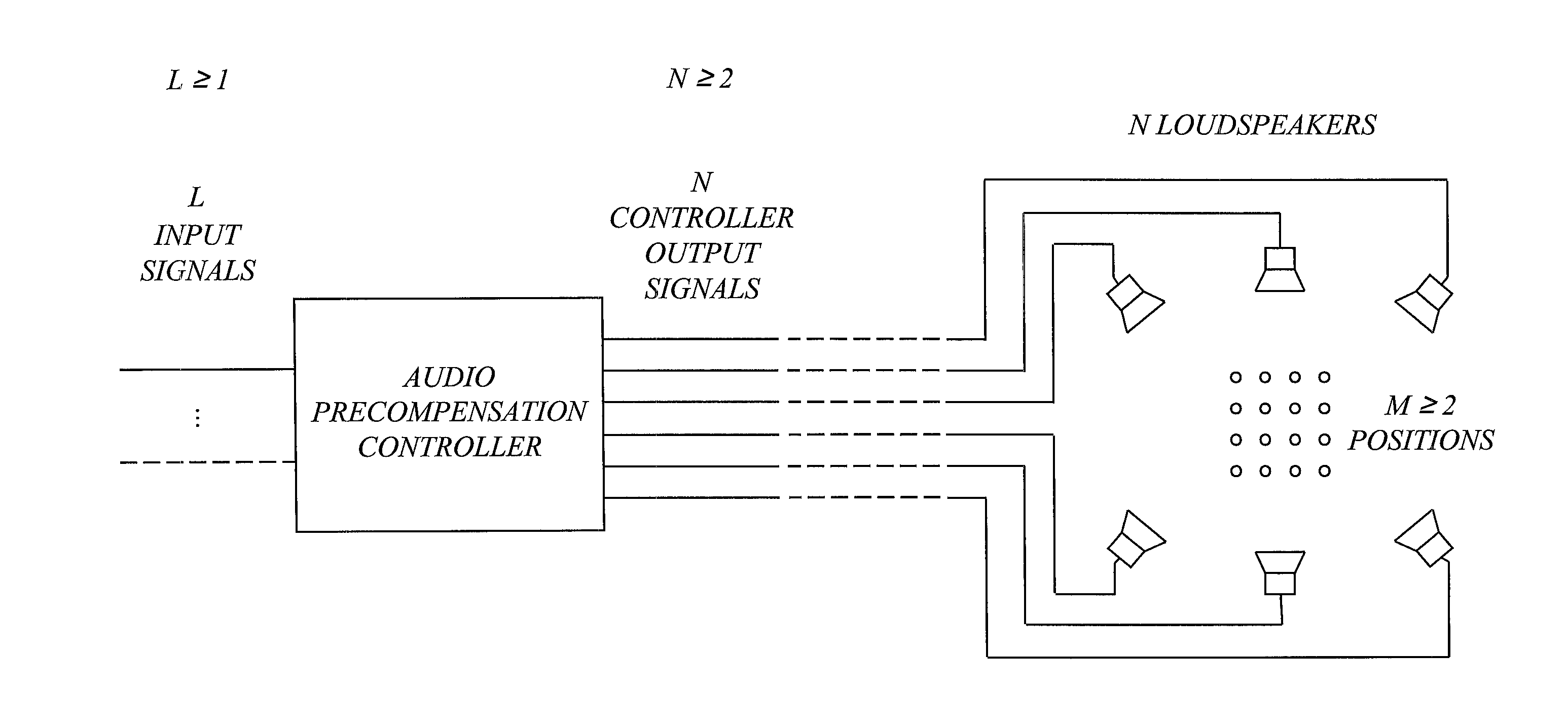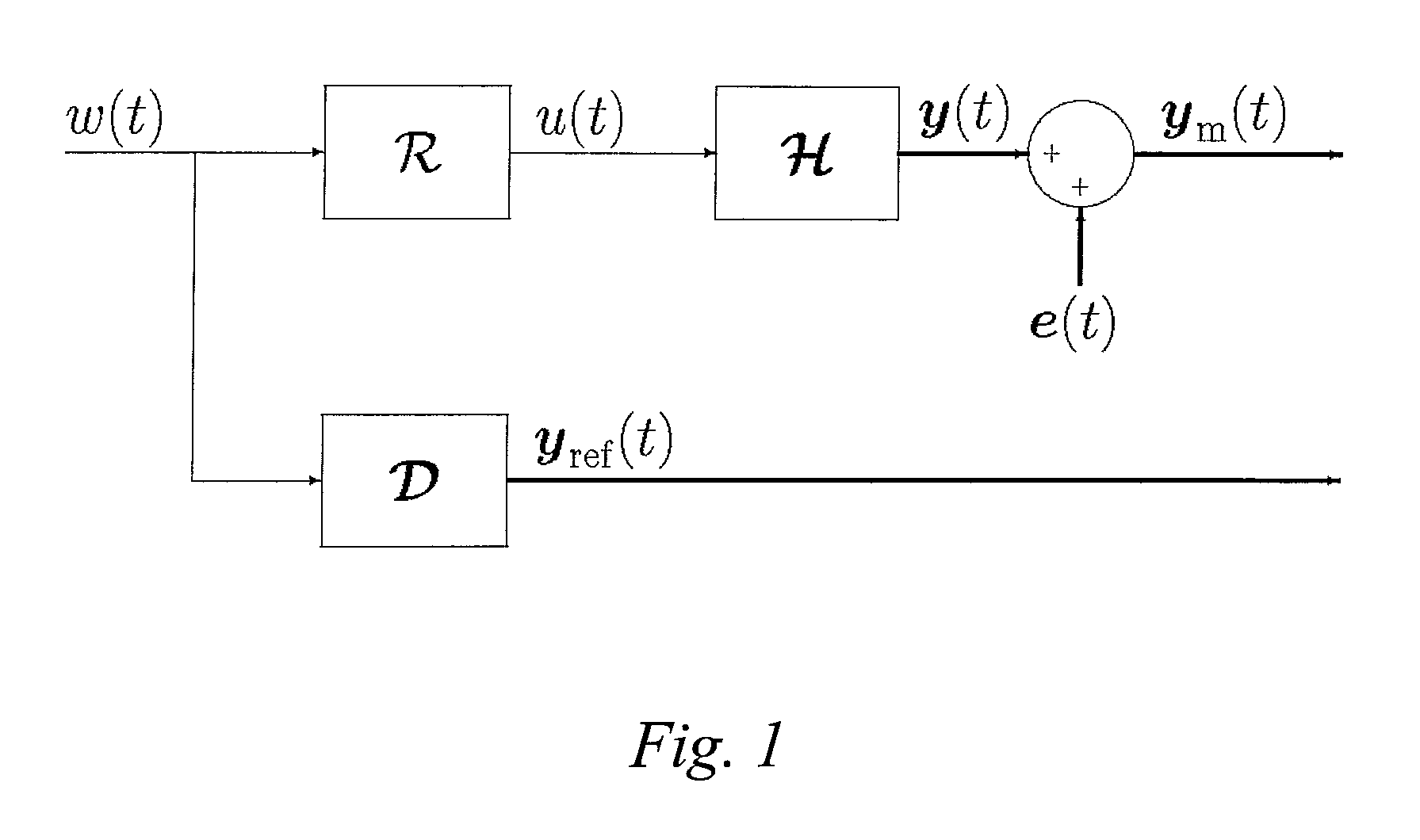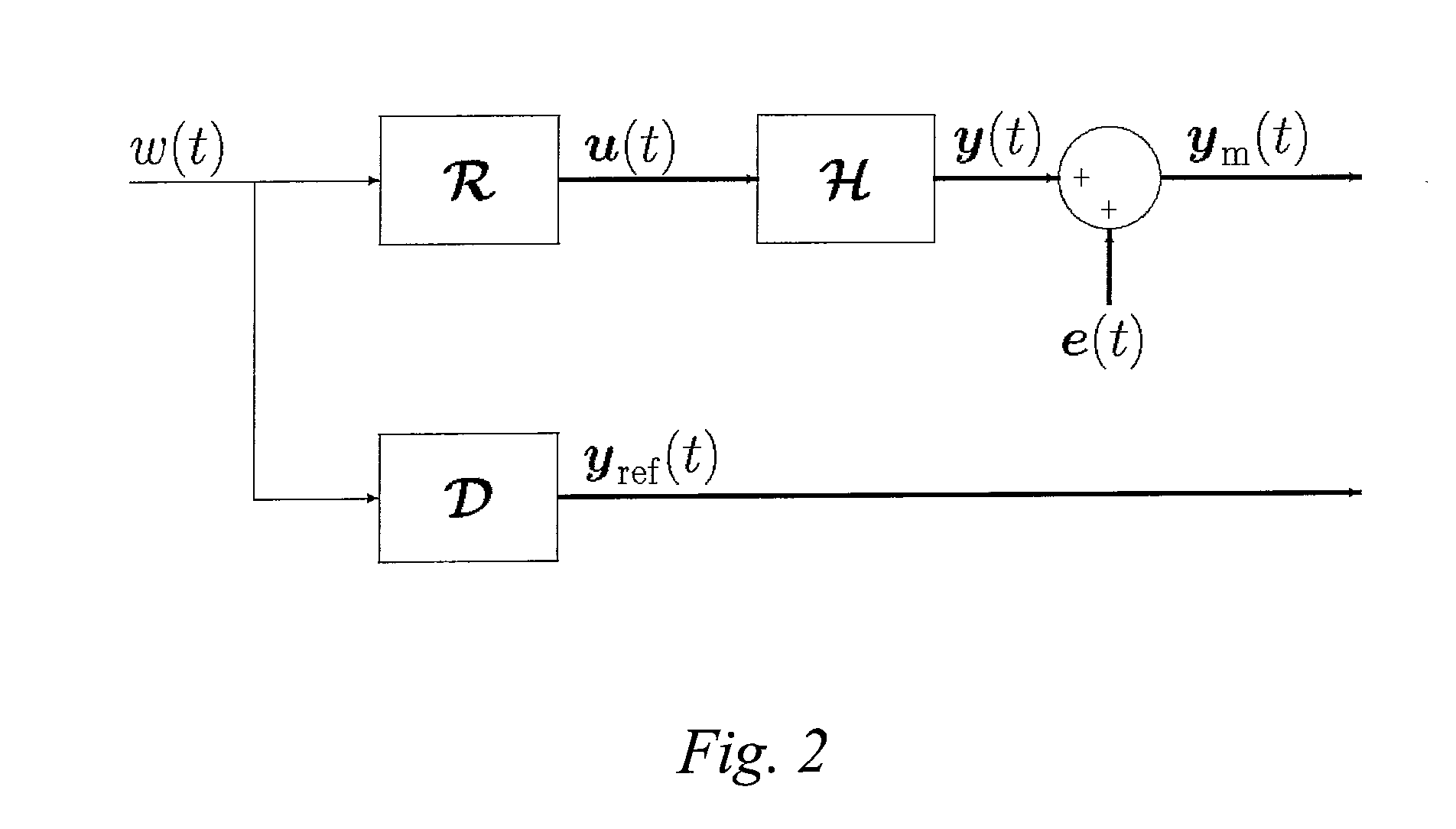Audio Precompensation Controller Design Using a Variable Set of Support Loudspeakers
a pre-compensation controller and variable set technology, applied in the direction of electrical transducers, pseudo-stereo systems, transducer details, etc., can solve the problems of cumbersome passive means for improving sound quality, and often inability to achieve even the effect of enhancing the reproduction of stereo or multi-channel audio materials
- Summary
- Abstract
- Description
- Claims
- Application Information
AI Technical Summary
Benefits of technology
Problems solved by technology
Method used
Image
Examples
Embodiment Construction
[0045]Throughout the drawings, the same reference numbers are used for similar or corresponding elements.
[0046]The proposed technology is based on the recognition that mathematical models of dynamic systems, and model-based optimization of digital precompensation filters, provide powerful tools for designing filters that improve the performance of various types of audio equipment by modifying the input signals to the equipment. It is furthermore noted that appropriate models can be obtained by measurements at a plurality of measurement positions distributed in a region of interest in a listening environment.
[0047]As mentioned, a basic idea is to determine an audio precompensation controller for an associated sound generating system. As illustrated in the example of FIG. 3, the sound generating system comprises a total of N≧2 loudspeakers, each having a loudspeaker input. The audio precompensation controller has a number L≧1 inputs for L input signal(s) and N outputs for N controller...
PUM
 Login to View More
Login to View More Abstract
Description
Claims
Application Information
 Login to View More
Login to View More - Generate Ideas
- Intellectual Property
- Life Sciences
- Materials
- Tech Scout
- Unparalleled Data Quality
- Higher Quality Content
- 60% Fewer Hallucinations
Browse by: Latest US Patents, China's latest patents, Technical Efficacy Thesaurus, Application Domain, Technology Topic, Popular Technical Reports.
© 2025 PatSnap. All rights reserved.Legal|Privacy policy|Modern Slavery Act Transparency Statement|Sitemap|About US| Contact US: help@patsnap.com



